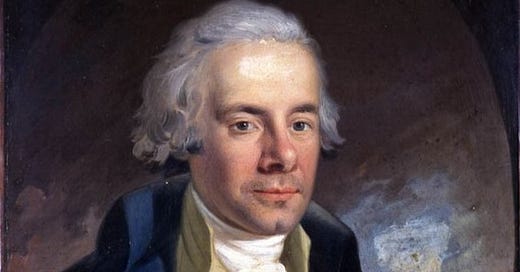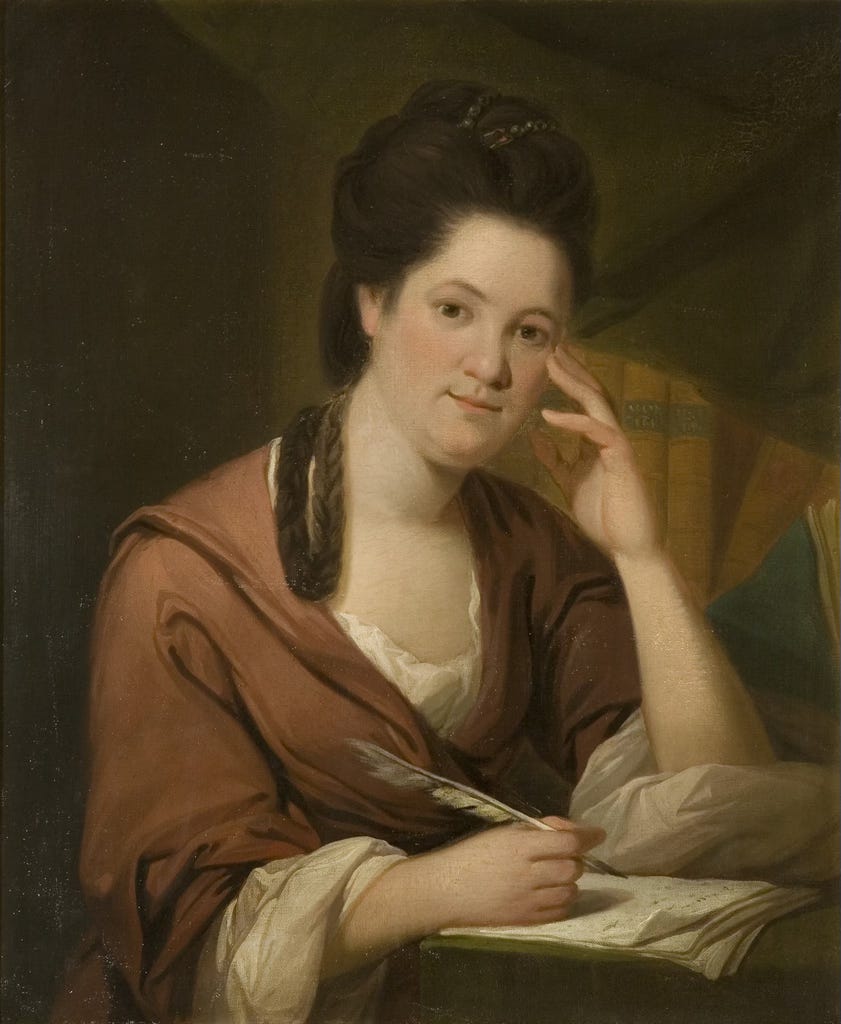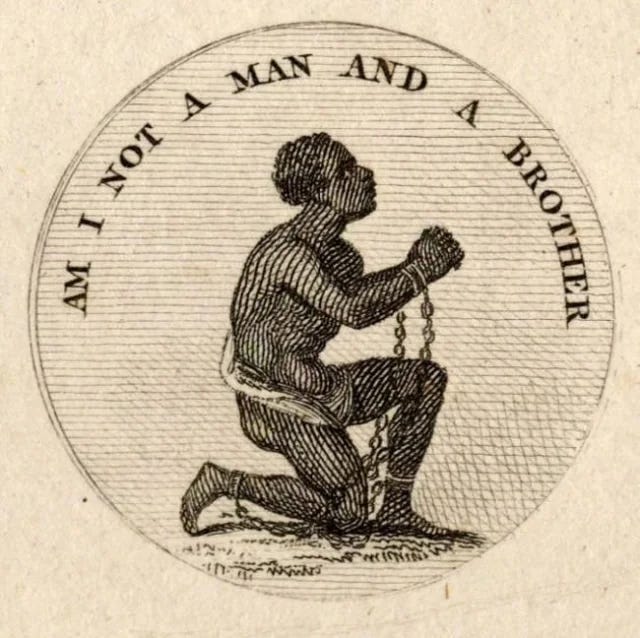In the dimly lit drawing rooms of late 18th-century England, a quiet revolution was taking shape. A group of friends, bound together by an unshakable faith and an audacious vision, gathered to discuss how they might right the greatest moral wrong of their time: the transatlantic slave trade. They were not politicians by trade, nor revolutionaries in the conventional sense, but their relentless determination would alter the course of history. Known as the Clapham Sect, this small circle of evangelical reformers believed that faith was not merely a personal solace but a call to action—a mandate to confront injustice and transform society.
At the heart of their mission was a conviction that every human being bore the image of God, and thus, the subjugation and exploitation of men, women, and children in the name of profit was an affront to divine justice. Their battle against the deeply entrenched institution of slavery was not waged with weapons but with parliamentary debates, legal battles, and a flood of pamphlets and petitions designed to awaken the conscience of a nation. Against the tide of apathy, opposition, and economic self-interest, they persevered, driven by the belief that no cause was too daunting when justice was on their side.
The Clapham Sect’s story is not merely one of abolition but of how a small, faithful community changed the world. It is a story that speaks to the power of courage, conviction, and compassion—a story that challenges us to ask how we, too, might turn faith into action in the face of injustice today.
A World in Chains
The world of the late 18th century was one where the air of progress and enlightenment masked a chilling reality. Across the vast Atlantic, the clinking of chains, the cries of the enslaved, and the creaking of ship hulls laden with human cargo told a darker story. The transatlantic slave trade had become the lifeblood of imperial economies, a brutal engine fueling the prosperity of nations. Millions of African men, women, and children were forcibly torn from their homelands, subjected to unimaginable horrors, and reduced to commodities to be bought and sold.
In Britain, the hub of this grim commerce, the slave trade was an unquestioned pillar of economic might. Wealth from sugar plantations in the Caribbean, fueled by the labor of enslaved people, poured into the coffers of merchants, shipowners, and investors. Politicians, aristocrats, and even clergy justified the trade as a necessary evil, a reality too vast and profitable to oppose. The human cost was hidden from public view, shrouded in the detachment of distant shores and the rhetoric of progress.
Yet, not everyone was blind to the moral rot at the heart of this system. The stirrings of a spiritual revival had begun to ripple through England, led by evangelical voices calling for repentance, righteousness, and reform. The Methodist awakenings of John and Charles Wesley had sown seeds of a renewed conscience, emphasizing that true faith demanded action. The industrial revolution, with all its promises of advancement, also heightened awareness of exploitation, raising questions about the cost of unchecked human ambition.
The stage was set for a collision between these moral awakenings and the entrenched forces of slavery. In the small village of Clapham, just outside London, a group of men and women—politicians, writers, clergy, and philanthropists—began to meet. They were ordinary in many respects: they drank tea, read scripture, and shared prayers. But their vision was extraordinary. They believed that the power of a unified faith and moral conviction could challenge even the most towering injustice.
These were times of stark contrasts—of wealth and suffering, enlightenment and brutality, faith and apathy. It was a time when the very notion of human dignity was contested in the public square. Into this volatile landscape stepped the Clapham Sect, determined to shine the light of truth into the darkest corners of society. Their fight would not be easy, but they were armed with something their opponents underestimated: the belief that justice, rooted in the eternal, would ultimately prevail.
The Clapham Sect: Who They Were
At the center of the Clapham Sect stood William Wilberforce, the most recognized face of the abolitionist cause. A diminutive man with a sharp wit and a gentle demeanor, Wilberforce possessed a moral courage that towered above his peers. His life took a decisive turn in 1785 when a spiritual awakening transformed his ambitions. No longer content with the trappings of political success, he became convinced that his faith required him to dedicate his life to a higher purpose. His voice in Parliament would become a clarion call against the slave trade, a voice that would not be silenced despite years of defeat and ridicule.
Beside him was Henry Thornton, a financier whose wealth and acumen were matched only by his generosity. Thornton provided the practical backbone of the group, using his resources to fund abolitionist campaigns and support those in need. His Clapham home became the hub of their activities, a place where ideas were born and strategies were forged over tea and earnest discussion.
Hannah More, a brilliant writer and educator, was the Sect’s literary firebrand. Her sharp pen produced poems, pamphlets, and plays that captivated the public imagination and exposed the moral contradictions of slavery. More understood that to change a society, one must reach both the head and the heart. Through her writings, she painted vivid pictures of human suffering and Christian duty, galvanizing a nation to action.
Other members, such as Granville Sharp, a tireless legal advocate for the enslaved, and for all my Greek students, the name of a rule you have likely become familiar with; and Zachary Macaulay, who meticulously documented the horrors of slavery and contributed their unique talents to the cause. John Venn, the rector of Clapham’s Holy Trinity Church, provided spiritual guidance, reminding the group that their work was not merely political but profoundly theological.
What bound this diverse group together was not only their shared faith but their unwavering belief in the dignity of every human being. They saw themselves as stewards of a divine mandate called to act justly, love mercy, and walk humbly with God. Their vision extended beyond abolition; they sought to reform society at its core, addressing poverty, education, and morality with the same fervor they applied to ending the slave trade.
Though small in number, the Clapham Sect wielded an influence far greater than their size would suggest. They were proof that a few committed individuals, united by a Christ-centered conviction and purpose, could challenge the very foundations of injustice. They did not seek fame or fortune but pursued a simple yet radical ideal: that faith must be lived out in action, and that even the darkest systems of oppression could be dismantled by the light of gospel truth and love.
Transforming Conviction into Change
For the Clapham Sect, faith was not an abstract concept confined to church walls but a driving force that compelled them to confront the injustices of their age. Their belief in the imago Dei—the idea that every person is made in the image of God—propelled their efforts to abolish the slave trade and to reimagine a society where justice, mercy, and compassion were not merely ideals but realities. Their actions, deeply rooted in this conviction, produced extraordinary outcomes that reshaped the moral fabric of Britain and beyond.
1. The Fight Against the Slave Trade
The abolition of the transatlantic slave trade stands as the Clapham Sect’s most renowned achievement. Wilberforce, as their leading advocate in Parliament, introduced bill after bill calling for its end. Year after year, he faced bitter opposition from powerful economic and political interests, yet his resolve never wavered. His speeches exposed the barbarity of the trade, describing the horrors endured by enslaved Africans in chilling detail.
Behind the scenes, the Sect engaged in relentless advocacy. Granville Sharp’s legal expertise secured groundbreaking victories, such as the Somerset case of 1772, which ruled that slavery had no basis in English law. Meanwhile, Zachary Macaulay meticulously gathered evidence from the colonies, compiling undeniable proof of the trade’s inhumanity. The Sect distributed pamphlets and organized petitions, mobilizing a growing public conscience.
Their persistence bore fruit in 1807 when the Slave Trade Act was passed, outlawing Britain’s participation in the trade. Yet they did not stop there. They pressed on for the complete abolition of slavery itself, achieving it in 1833 with the Slavery Abolition Act, which emancipated enslaved people across the British Empire.
2. Education and Moral Reform
The Clapham Sect recognized that true social transformation required more than legislative change—it demanded the cultivation of virtue and knowledge. Hannah More led initiatives to educate the poor, founding schools that combined academic learning with moral instruction. Her Cheap Repository Tracts, a series of accessible and engaging pamphlets, taught Christian values to working-class readers while challenging societal vices like drunkenness and idleness.
Their vision extended to the moral character of society as a whole. The Sect campaigned against practices like dueling, gambling, and cruelty to animals, striving to instill a greater sense of responsibility and compassion across all social strata.
3. Global Missions and Humanitarian Work
The Clapham Sect’s influence reached far beyond Britain’s shores. They were instrumental in establishing organizations like the Church Missionary Society and the British and Foreign Bible Society, which spread the gospel and distributed Bibles worldwide. Their humanitarian vision extended to India, where they campaigned for the end of practices like sati (widow-burning) and for the education of women.
Zachary Macaulay’s work in Sierra Leone exemplified their commitment to global justice. Sierra Leone, established as a colony for freed African slaves, became a beacon of hope—a place where those once enslaved could rebuild their lives in freedom.
4. Cultural and Spiritual Renewal
Perhaps the most remarkable outcome of their faith in action was the cultural shift they inspired. Through their persistent efforts, the moral landscape of Britain began to change. The public, once indifferent to the plight of the enslaved, grew increasingly vocal in their support for abolition. Christian values of compassion and justice became more deeply woven into the fabric of society.
The Clapham Sect’s work was not without cost. They faced ridicule, opposition, and personal sacrifices. Yet their legacy endures as a testament to what can be achieved when faith is lived out with courage and purpose. By addressing the root causes of societal ills and refusing to accept the status quo, they demonstrated that moral and spiritual renewal could lead to tangible, world-changing results.
Methods, Strategies, and Legacy
The Clapham Sect’s impact was not born from grandiose displays of power or dramatic revolts but through deliberate, strategic efforts that were as practical as they were profound. They understood that lasting change required a multi-faceted approach, combining political advocacy, public persuasion, and grassroots action. Their legacy lies not only in their accomplishments but also in the methods that made those accomplishments possible—methods that continue to inspire reformers today.
1. Leveraging Influence and Networks
The Clapham Sect wielded their social connections with precision and purpose. Many of its members occupied positions of wealth and influence, which they saw not as privileges but as tools for justice. Wilberforce’s voice in Parliament amplified their cause, while Henry Thornton’s financial acumen provided critical funding for abolitionist campaigns, missionary endeavors, and educational initiatives.
Their gatherings in Clapham were not merely social but strategic. Plans were made, alliances forged, and resources pooled in Thornton’s home, which functioned as the nerve center of their operations. They also collaborated with other reformers and organizations, creating a network of like-minded individuals united by a shared vision.
2. Winning Hearts Through Persuasion
The Clapham Sect understood the power of public opinion. Through literature, art, and compelling rhetoric, they sought to awaken the moral conscience of Britain. Hannah More’s tracts and plays painted vivid pictures of the horrors of slavery and the virtues of Christian living, making complex moral issues accessible to ordinary people. Granville Sharp’s legal writings and Macaulay’s documentation of atrocities provided irrefutable evidence that exposed the inhumanity of the slave trade.
Their campaigns were bolstered by petitions, boycotts, and public demonstrations, all designed to pressure Parliament and engage the broader public. The sugar boycott, for instance, encouraged households to avoid sugar produced on slave plantations, turning consumer choices into moral statements. This grassroots effort connected everyday citizens to the abolitionist cause and made the fight against slavery a matter of personal responsibility.
3. A Legacy of Transformation
The outcomes of their efforts were nothing short of revolutionary. The passage of the Slave Trade Act in 1807 and the Slavery Abolition Act in 1833 represented the dismantling of one of the most entrenched systems of oppression in history. Yet their legacy extended far beyond legislative victories.
The Clapham Sect’s commitment to education, moral reform, and global missions created ripple effects that touched nearly every corner of society. They laid the groundwork for a culture that increasingly valued justice, compassion, and equality. The organizations they founded—such as the British and Foreign Bible Society and the Church Missionary Society—continue to impact millions today.
Faithful Labor, Unyielding Vision
The story of the Clapham Sect reminds us that even the most entrenched evils can be dismantled when ordinary people dare to act with extraordinary faithfulness. Their world was dominated by an empire built on the backs of the oppressed, yet they refused to be daunted by the enormity of the task. They saw beyond the immediate obstacles to a vision of a better world—a vision shaped by the beauty of justice, the dignity of every human life, and the call of their Creator.
For those who today advocate for the most vulnerable—the preborn—this legacy is a rallying cry. The fight for justice may feel like chiseling at an unyielding stone, with progress slow and resistance strong. But let the Clapham Sect remind you that the greatest sculptures, the most breathtaking works of art, were not shaped in an instant. They were formed by the consistent, intentional strokes of one who saw the beauty hidden within the rock.
Standing for righteousness in a nation that seems bent on forgetting its moral foundation can feel isolating. Yet the Clapham Sect teaches us that the unseen labor of today can spark the transformation of tomorrow. Public opinion shifts slowly, hearts change one at a time, and yet, with faith and perseverance, movements are born, and nations are reshaped.
Your labor is not in vain. Every prayer, every conversation, every act of courage to defend what is true and good, is a chisel strike that shapes a future where righteousness is exalted. Like the Clapham Sect, you may not see the full harvest of your work, but you can trust the Master Sculptor, whose hands guide the vision. The battle belongs to the Lord, and victory is already assured in Christ.
So take heart and press on. In your faithfulness, you are part of a story far greater than yourself—a story of redemption, justice, and the triumph of grace. The Clapham Sect’s example is proof that when the vision of God’s beauty is set upon our hearts, even the hardest rock can be transformed into something glorious.
For Further Reading
Books
Eric Metaxas, Amazing Grace: William Wilberforce and the Heroic Campaign to End Slavery
Stephen Tomkins, The Clapham Sect: How Wilberforce’s Circle Transformed Britain
John Pollock, Wilberforce
Hannah More, Strictures on the Modern System of Female Education
Kevin Belmonte, Hero for Humanity: A Biography of William Wilberforce
Primary Sources
William Wilberforce, A Practical View of the Prevailing Religious System of Professed Christians
Hannah More, Cheap Repository Tracts
Granville Sharp, A Representation of the Injustice and Dangerous Tendency of Tolerating Slavery









Very interesting to hear about the historic contributions of a group I was unaware of.